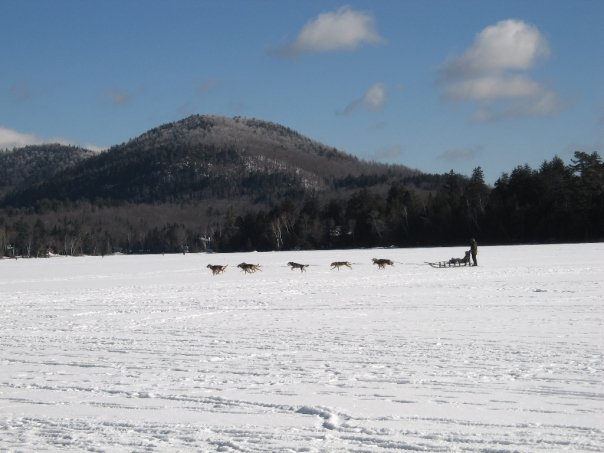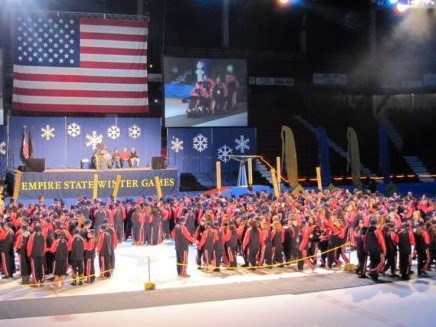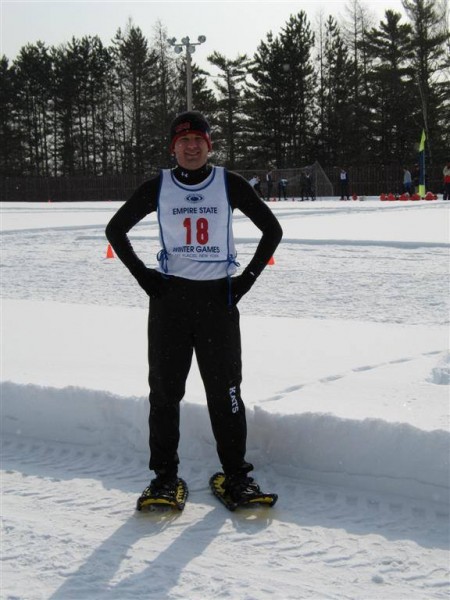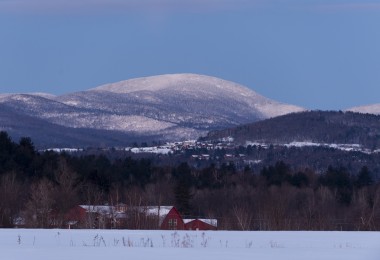For all of us winter lovers out there, the Winter Olympics are the perfect way to celebrate winter recreation, athletes, and the season. However, why wait for the Olympic Winter Games in 2022 when you can experience an Olympic-style event right now in 2020. Recognized by the United States Olympic Committee, the Empire State Winter Games in New York bring all winter sports enthusiasts together. Now celebrating its 40th year, this community-driven event will take place Jan 29- Feb 2, 2020. As an annual multi-day, multi-sport event, the Winter Empire State Games are not to be missed!
Read More: A Winter Olympic Sport In The Making
About The Winter Empire State Games
In 1978, a gentleman by the name of Herbert Mols created the New York Empire State Games in Syracuse, NY. The first games, held at Syracuse University, were summer games. A great success, the Empire State games became part of the National Congress of Games shortly after the games. The first Empire State Winter Games (ESWG) began in 1981, and we held in Lake Placid, NY, which was also the home of the 1932 and 1980 Olympic Games. There were six events at the first WESG: alpine skiing, ski jumping, cross country skiing, indoor speed skating, figure skating, and biathlon.
Current Events Of The Games
Now, there are over 20 different sports (including snowshoeing!) throughout the Empire State Winter Games. Furthermore, some events mirror the Winter Olympic events. All events in the WESG take place in the Adirondack Mountains through multiple villages and towns, including Lake Placid, Brighton, Harrietstown, Malone, North Elba, Tupper Lake, and Saranac Lake These events include:
- Alpine Skiing
- Biathlon
- Bobsled
- Cross-Country Skiing
- Figure Skating
- Freestyle Moguls
- Luge
- Nordic Combined
- Skeleton
- Ski (Cross, Jumping, Orienteering)
- Snowboard Cross
- Snowshoeing
- Speed Skating
- Squirt Hockey
- Girls Hockey
- Women’s Hockey
- Winter Biking
There are also events for those with disabilities. Adaptive events include Alpine Skiing, Biathlon, Ski Cross, Snowboard Cross, and Bobsled.
Read More: Olympics In Snowshoeing? Yes! The Special Olympics
Info For Athletes & Spectators
For those interested in participating in the games, registration is still open! You also do not need to be a New York resident to participate. The 2020 games will bring together over 2,000 athletes from over 15 U.S. states and three countries! Check-in for any registered athletes will be on January 29th at the Conference Center at Lake Placid from 4-6
Spectators can watch the games for free, but some venues do charge an entrance fee. If you plan on attending multiple sites, purchase an ESWG Olympic Sites Passport. Plus, don’t miss the opening ceremonies! They will take place on Thursday, January 30th, at 6:30 pm at Herb Brooks Arena in the village of Lake Placid.
Also, throughout the games, the Winter Carnival will be held in Saranac Lake. Get your pictures with ice sculptures, including a castle made out of ice. Or go for great shopping in all the towns and villages where the events are taking place!
Empire State Winter Games Snowshoeing Events
The ESWG first added snowshoeing in 1984. Mirror Lake in Lake Placid, NY, held the snowshoe track and sprint races from 1984-1991. The 400m, 200m, and 100m distance events took place right in front of the Mirror Lake Inn. Ironically, the Inn was the same venue for snowshoe races held by Melvil Dewey, who created the Dewey Decimal System that is universally used in libraries.
In 1992, the snowshoe events moved to the Lake Placid Equestrian Stadium. The opening ceremonies for the 1980 Winter Olympics were at this stadium. Furthermore, a temporary stadium was built next to it, which held 30,000 spectators. Then, in 1995, Paul Smith’s College became the new venue for the sprints. Depending on the availability of warm bathrooms, events alternated between Paul Smiths College and the North County Community College Athletic Fields in Saranac Lake.
For one year (2011), the snowshoe events were at the Petrova Elementary School in Saranac Lake with 100m, 400m, and 800m events. However, the games were only there for one year. After 2011, the snowshoe events moved back to the Soccer Field near Paul Smiths College and where they are still held today.
The Early Years Of Empire State Winter Games Snowshoeing
During the first snowshoe events, athletes participated from 6 different regions in New York State and had to run all three events (400, 200, and 100). The racer with the lowest cumulative time of all three races was the winner. Divisions included male or female, scholastic or open divisions. Scholastic athletes were male and female athletes from age 12 to seniors in high school. Whereas, open athletes were male and female from college-age and up. In the 90s, the games added a masters-level division, 1500m, and 5K event.
We spoke to athlete Jim Tucker about his experience with the first snowshoe events. He recalls that runners started the race from a standing start with the gun behind the runner. Conditions often were the worst of it. Jim Tucker mentioned that one year, his fellow athlete Eric Mann, blasted out of the start for the 200 meters from one of the inside lanes. Just after he entered the curve, his snowshoe cleat did not catch the pebble grain surface of the ice (the surface of the ice was like the surface of a new basketball), and he slid on his side through lanes 2 – 4. Once he stopped sliding, he got back up and finished well in the race.
According to Jim Tucker, in another early year of the games, Mirror Lake was covered in about 18″ of snow, which pushed down onto the ice. The water came up through the cracks that had formed in the ice, creating a deep slush layer under the powdery snow on top. These conditions were dreadful for all racers involved. The early heats of the 400 were above the slush, but before long, everyone was soaked above the ankles. Fortunately, it wasn’t below zero (other years this was certainly the case), or the slush would have frozen upon impact with the air, adding to the calamity.
Recent Years Of Empire State Winter Games Snowshoeing
Before 2011, New York State ran the Empire State Games. While under this ownership, athletes had to qualify for each sport and event. Athletes could compete in your home region or another region of the state as long as you met the qualification standards of the activity. Races were divided by gender and age group, and racers of all age groups were represented from age 14 up to 70 years old.
I began snowshoe racing in January of 2005 and competed in the Empire State Winter Games from 2005-2011. When I competed from 2005-2010, I ran in qualifying races for (and ended up competing in) the distance and sprint events for 1500m, 100m, 200m, 400 m, and the 5k cross-country style or trail run.
After competing in the events from 2005-2011, they awarded gold, silver, and bronze medals for every age group and gender. Even though I never received a medal, I enjoyed my time at the games. However, I celebrated my fellow teammates as they won medals in several events. My father, Tom Niziol, received medals in the sprints. Additionally, Michael Rogers, Dale Deahn, and Jim Tucker all received medals.
In 2011, Lake Placid, Saranac Lake, ROOST (Regional Office of Sustainable Tourism), and the Olympic Development Regional Committee took over running the winter games. Furthermore, there were no Empire State Summer Games. As part of the new ownership, there were no qualifying races required in snowshoeing, and they dropped the 1500m event. Instead, they added an 800m race to the sprint events and kept the 100 m, 200m, and 400m events. They also continued the 5k cross country style or trail run. These are the same events that are part of the ESWG snowshoeing events today.
Read More: Perfect Conditions at the 2010 Empire State Games
Getting Into The Games
I first heard of the Empire State Winter Games in late 2004. I began club running that year and started looking for races to do in the wintertime. Luckily, I saw that a fellow running club member, Michael Rogers, was hosting a 5k snowshoe qualifying race at Chestnut Ridge County Park in Orchard Park. The race took place in mid-January. Ironically, this race also met the qualifying standards for the 5k cross country for the Western New York Region of the ESWG.
I had never run in snowshoes before, let alone hiked in snowshoes, backpacked in snowshoes, walked in snowshoes, or even seen or heard of a pair of snowshoes. Basically, I didn’t even know what snowshoes were at this time. However, I convinced my dad to let me enter the race since you could rent snowshoes to use for the day. I went to the event, rented my snowshoes, competed and qualified!
After enjoying the 5k, I learned that the distance and sprint events (100m, 200m, 400m, 1500m) had qualifying races at the end of January. However, the only place the races were held that met the qualifying standards in Western New York was Arcade Village Park. Dr. Dale Deahn hosted the event and used a snowmobile to make a 300-meter track. There were four lanes all the way around the track, each of which separated with small orange disc soccer cones. This setup, I learned, is the same as the games in Lake Placid, Saranac Lake, and at Paul Smiths. Furthermore, the 1500m was a waterfall start, and you could cut into the first lane after the 100-meter turn.
I raced in these qualifying races in Arcade from 2005-2010. Also, my father Tom Niziol competed in the qualifying races in Arcade. After successful qualifying, my dad bought be a pair of Northern Lites Elite Race Snowshoes and a pair of Havlick Sprinter snowshoes.
Memories Of The Games
Just as with the early games, the conditions and trails are always memorable. The worst year was in 2006, where the temperatures were in the single digits and may have even been below zero. There were also strong winds, and close to a foot of snow fell during the races. At this point, the only way to warm up was to sit in your car with the heat on. When we were getting ready to leave, my dad and I got in the car and tried to start, and we couldn’t! Eventually, though, we were able to jump-start it and drove it back to Saranac Lake and bought a new battery.
My favorite and most memorable course was the 5k cross country trail event at the Mt. Van Hoevenberg Cross Country Skiing & Biathlon Center in 2005 and 2007-2010. This 5k was a fantastic course and, in my opinion, probably the best place the event was ever held. The venue was historic, scenic, and challenging.
In 2006, the race was held at the Lake Placid Olympic Ski Jumping Complex and shorted to 2.9 miles due to the weather. Again, it was in the single digits with a was a strong wind. Thus, these are only a few memorable moments from the games over the years for me.
Go Check Out The Empire State Winter Games!
Don’t miss the Empire State Winter Games on Jan 29- Feb 2, 2020! As a spectator or athlete, the games are sure to be filled with history, memorable events, or maybe even weather and conditions. This year, all snowshoeing events will be in Paul Smith’s, NY, on Saturday, February 1st.
Have you been to the Empire State Winter Games before? What was your experience? Let us know in the comments below!
Read More: Why Snowshoeing Should Be An Olympic Sport


















Very interesting reading
Dave Robinson
President
Snowshoe Canada
I’m so glad you enjoyed it, Dave. Thanks for sharing! I love the Olympics so it’s neat to read about Olympic style events that occur on an annual basis, like the Empire State Games. 🙂
Fantastic article!! This brought back so many wonderful memories of the games. It is another one of those special ways to enjoy all that winter has to offer!!